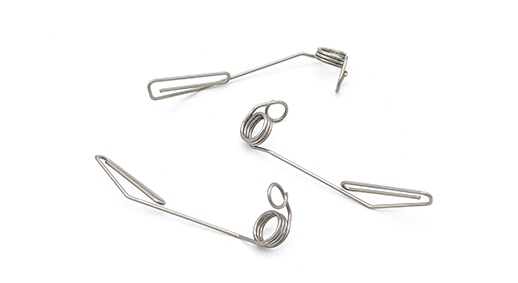Get unique, complex parts easily. No matter your requirements, Chaoyi Spring creates hard-to-produce coil springs and wire forms.
Let us help you create the custom wire form you need, from S-hooks and J-hooks to utility hooks and more.
We work closely with customers across a wide range of industries, helping them design and manufacture made-to-order parts.
Why choose Chaoyi Spring? We prioritize customer-focused collaboration, modern equipment and the latest technology to make your parts per print.
Find the information and guidance you need, from measuring a spring to learning about materials, placing an order and much more.
Springs, those ubiquitous devices found in everything from car suspensions to ballpoint pens, are fascinating examples of how physics manifests in everyday life. They store and release energy through compression


Springs, those ubiquitous devices found in everything from car suspensions to ballpoint pens, are fascinating examples of how physics manifests in everyday life. They store and release energy through compression and extension, governed by a fundamental principle known as Hooke's Law. This article delves into the intricate world of spring compression, exploring the equations that describe its behavior, the factors influencing its characteristics, and the diverse applications that make springs indispensable in modern technology.

The compression of a spring is a fundamental concept in physics and engineering. It describes the shortening of a spring when a force is applied to it. The spring's resistance to this compression is directly related to its stiffness, a property that determines how much force is required to compress it a given distance. This relationship is encapsulated by Hooke's Law, a cornerstone of spring mechanics.
Hooke's Law, formulated by Robert Hooke in 1676, states that the force required to compress or extend a spring is directly proportional to the displacement from its equilibrium position. In simpler terms, the harder you push or pull on a spring, the more it compresses or stretches. This relationship can be mathematically expressed as:
F = -kx
Where:
The negative sign in the equation indicates that the force exerted by the spring opposes the applied force – a push on the spring results in a push back, and a pull on the spring results in a pull back. This is why springs are often used to dampen vibrations and oscillations.
The compression of a spring is influenced by several factors, including:
Spring compression finds a wide range of applications in diverse fields, including:
Let's illustrate the application of Hooke's Law with a simple example. Imagine a spring with a spring constant of 100 N/m. If you apply a force of 50 N to the spring, the displacement would be:
x = F/k = 50 N / 100 N/m = 0.5 m
This means the spring would compress by 0.5 meters under the applied force. This equation provides a powerful tool for analyzing and designing systems that utilize spring compression.
The compression of a spring is a simple yet powerful concept with profound implications in various fields. Understanding Hooke's Law and the factors influencing spring compression is essential for engineers, scientists, and anyone interested in the mechanics of everyday objects. From the smooth ride of a car to the precise operation of a medical device, springs are integral to our modern world, and their behavior continues to fascinate and inspire innovation.
Browse some of the custom wire forms and springs that we manufacture. Don’t see what you need? We specialize in made-to-order products that meet your application requirements.
Visit Our GalleryNeed a custom wire form or coil spring? We make it work. Fill out the contact form and a representative will respond within 1 business day. If you have a PDF or CAD file, you can submit to request a quote.